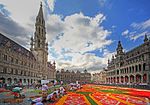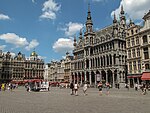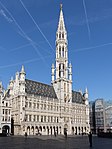Bombardment of Brussels

The bombardment of Brussels by troops of Louis XIV of France on August 13, 14 and 15, 1695, and the resulting fire were together the most destructive event in the entire history of Brussels. Brussels was mostly untouched by most other conflicts. It did not suffer significant damage during World War I, and bombing during World War II was not nearly as extensive as that of 1695. The Grand Place was destroyed, along with a third of the buildings in the city. The reconstruction of the city centre, effected during subsequent years, profoundly changed the appearance of the city and left numerous traces still visible today. The bombardment was part of the Nine Years' War. The French forces hoped that by bombarding, or threatening to bombard Brussels, they would be able to divert Allied troops from the Siege of Namur. The strategy was unsuccessful, and no military gain came of the bombardment, although Louis XIV's reputation suffered for such a barbarous act.
Excerpt from the Wikipedia article Bombardment of Brussels (License: CC BY-SA 3.0, Authors, Images).Bombardment of Brussels
Grand Place, City of Brussels Pentagon (Brussels)
Geographical coordinates (GPS) Address Nearby Places Show on map
Geographical coordinates (GPS)
| Latitude | Longitude |
|---|---|
| N 50.8467 ° | E 4.3524 ° |
Address
Grand-Place - Grote Markt
Grand Place
1000 City of Brussels, Pentagon (Brussels)
Belgium
Open on Google Maps











